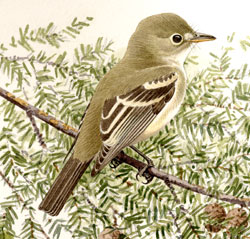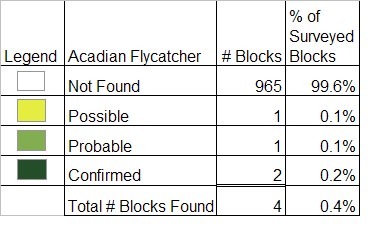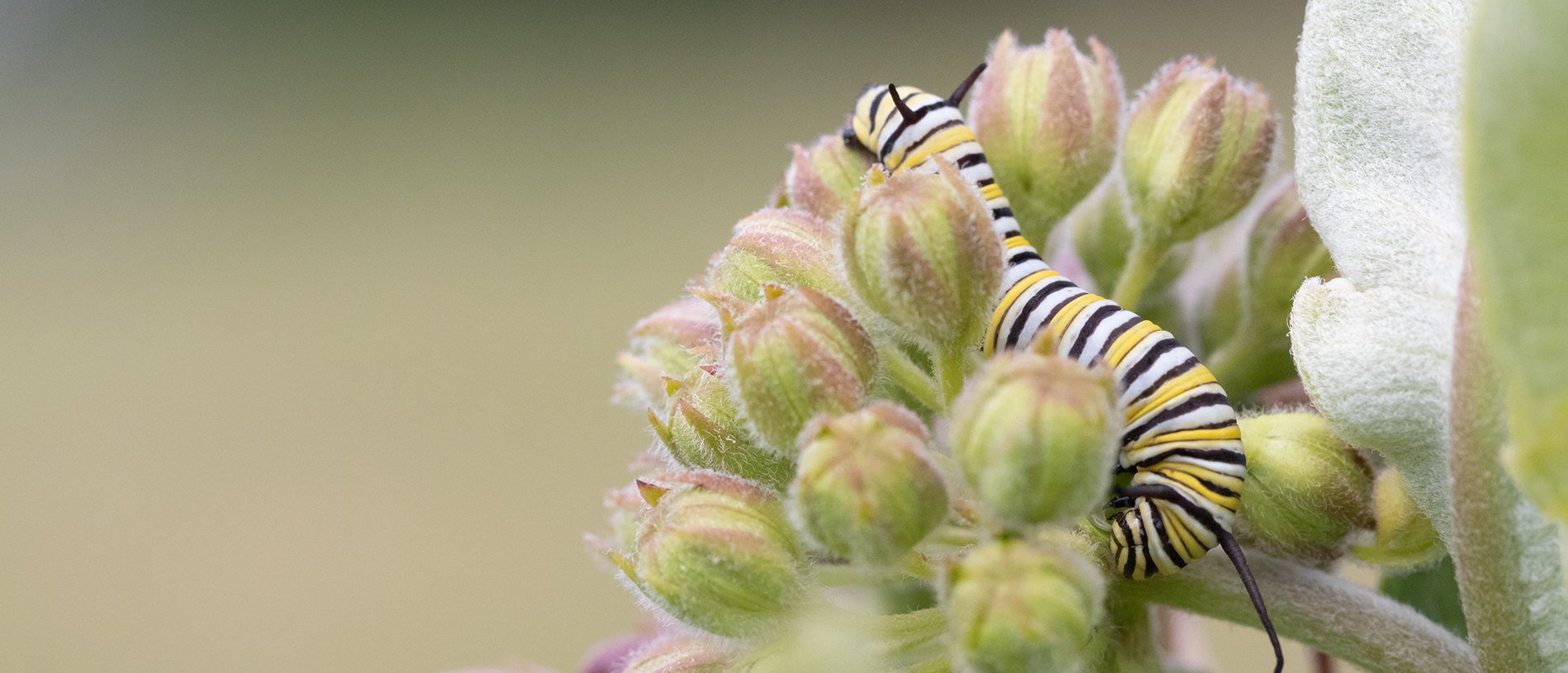Find a Bird - BBA1
Breeding Bird Atlas 1 Species Accounts
Acadian Flycatcher
Empidonax virescens
Egg Dates
June 15 to July 8
Number of Broods
one; may re-lay if first attempt fails.

The Acadian Flycatcher is a southern Empidonax, whose range historically came no closer than Long Island, New York. Periodically, breeding birds have invaded southern Connecticut, tantalizing observers in Massachusetts. A nest, eggs, and one adult were collected in Hyde Park in June 1888, but it was another 80 years before even singing summer males were confirmed in the state. Each May in the early 1970s, Manomet Center for Conservation Sciences staff began to band several Acadian Flycatchers, and June singing birds were soon found south and southwest of Boston. Finally, in 1977, two pairs and 1 nest were found in Middleboro, and in 1980 another nesting pair was discovered in Granville, on the Connecticut border in the eastern Berkshires. Now up to 10 pairs breed in Granville, and two or three singing males have also been found for several summers in the hills west of Quabbin. In 1987, the first Worcester County breeding occurred in Royalston.
Spring arrivals can be found during the third week in May, both in southeastern and western Massachusetts. Migration continues into June, and many singing males seem to disappear after failing to attract mates. Actual breeding remains very localized in dense, well-watered woodlands, especially along small streams, and in the west is strongly associated with Eastern Hemlocks. The fact that there is much appropriate habitat in the western hills and that this area is close to the base population in Connecticut accounts for the breeding population that has become established there in the years following the Atlas period. The nesting birds in eastern Massachusetts have all been in deciduous woods, with Red Maple predominating; and no recurring pairs at any one site have been identified in that region.
The birds seem to prefer steep hillsides or ravines, but the nest itself is built near or over the slow-moving portions of the stream itself. There, in the shade of the lower branches of the larger trees, the bird goes about its fly-catching business, the male sneezing out his short emphatic song through most of the summer. The song is basically a two-syllable peet-seet, the first part rising and slightly drawn out and the second louder, short, and sharply falling. The only variety seems to be in the degree of harshness in the notes, with the first syllable tending generally to be somewhat less harsh. It resembles the single, almost burry-sounding phrases in one of the Red-eyed Vireo’s songs. The call note is a nondescript peep. On the breeding grounds, the bird also utters a fast series of soft melodious notes, almost a trill, fluttering its wings as it does so, much like a young bird begging for food. This sound is also occasionally heard on migration.
The hanging nest of grasses, rootlets, or moss is not well built, being rather loose with a thin bottom, always in the outer fork of a lower horizontal or drooping branch, usually 8 to 15 feet above the ground or water. Often, streamers of vegetation are attached to and hang below the nest for a foot or more. All of the nests found in western Massachusetts have been in Eastern Hemlocks. The 1977 Middleboro nest was built 10 feet above the ground on a branch 7 feet from the trunk of a Black Gum. It was partially built on June 30 (Petersen, BOEM). Two to four eggs are laid, and the clutch sizes for 2 Massachusetts nests were three eggs each (EHF, BOEM). Incubation lasts almost two weeks, with a single brood the rule. If a cowbird disturbs the nest before the eggs are laid, the birds may build again. Acadian Flycatchers have been observed incubating on June 20 in Royalston (TC), June 28 in Granville, and July 8 in Middleboro (Petersen, BOEM).
Data on nestlings and fledglings in Massachusetts is lacking. Presumably, adults and young remain together for two or more weeks after fledging, but the birds are very quiet and inconspicuous at this time. The southward departure begins in early August and is completed in a month, but few individuals are identified at this time due to the similarity to other Empidonax species. Acadian Flycatchers winter in humid lowland forests from Nicaragua south to northern South America.
Map Legend and Data Summary
Atlas 1 data collected from 1975-1979


Note: rare and local but steadily increasing breeder in southern and western sections
Seth Kellogg



